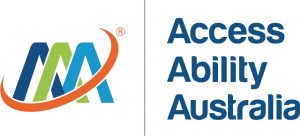Social Stories
Social Stories are a social learning tool that explain social situations and help individuals learn socially appropriate behaviour and responses. Social stories are developed to help individuals with ASD (Autism Spectrum Disorder) and may also be used to help other individuals with learning and intellectual disorders.
Social stories can be used for any age group.
As at 31 March 2018, 29 per cent of NDIS participants with an approved plan had a primary disability of Autism Spectrum Disorder (ASD), making it the largest primary disability category for the NDIS [1].
In 2018 there were 205,200 Australians with autism, a 25.1% increase from the 164,000 with the condition in 2015 [2].
Access Ability Australia will be working with our AAA Network members to develop customised Social Stories for their venues and events. AAA Social stories will be used to prepare individuals for social interaction by providing clear information about specific social situations, outlining why they happen and what typical responses might be.
According to Tony Attwood, a clinical psychologist known worldwide for his knowledge of Asperger’s Syndrome “Social Stories are written with the intention of providing information and tuition on what people in a given situation are doing, thinking or feeling, the sequence of events, the identification of significant social cues and their meaning, and the script of what to do or say; in other words, the what, when, who and why aspects of social situations”.
AAA Social Stories complement Access Key use or can be used in isolation.
AAA Socials Stories can be shared to educate or to acknowledge and praise successful completion of an accomplishment. They may be told by a range of people including a parent, a Support Worker or an educator.
Social Stories use a specifically defined style and format. AAA Social Story authors include different types of sentences to achieve defining characteristics (criteria). These include descriptive, perspective, directive, affirmative, control and co-operative. AAA Social Stories also include a range of contexulised professional photographs to help with providing meaning.
[1] https://data.ndis.gov.au/reports-and-analyses/outcomes-participants-autism-spectrum-disorder#:~:text=As%20at%2031%20March%202018,disability%20category%20for%20the%20NDIS.
[2] https://www.abs.gov.au/AUSSTATS/abs@.nsf/Lookup/4430.0Main+Features102018

